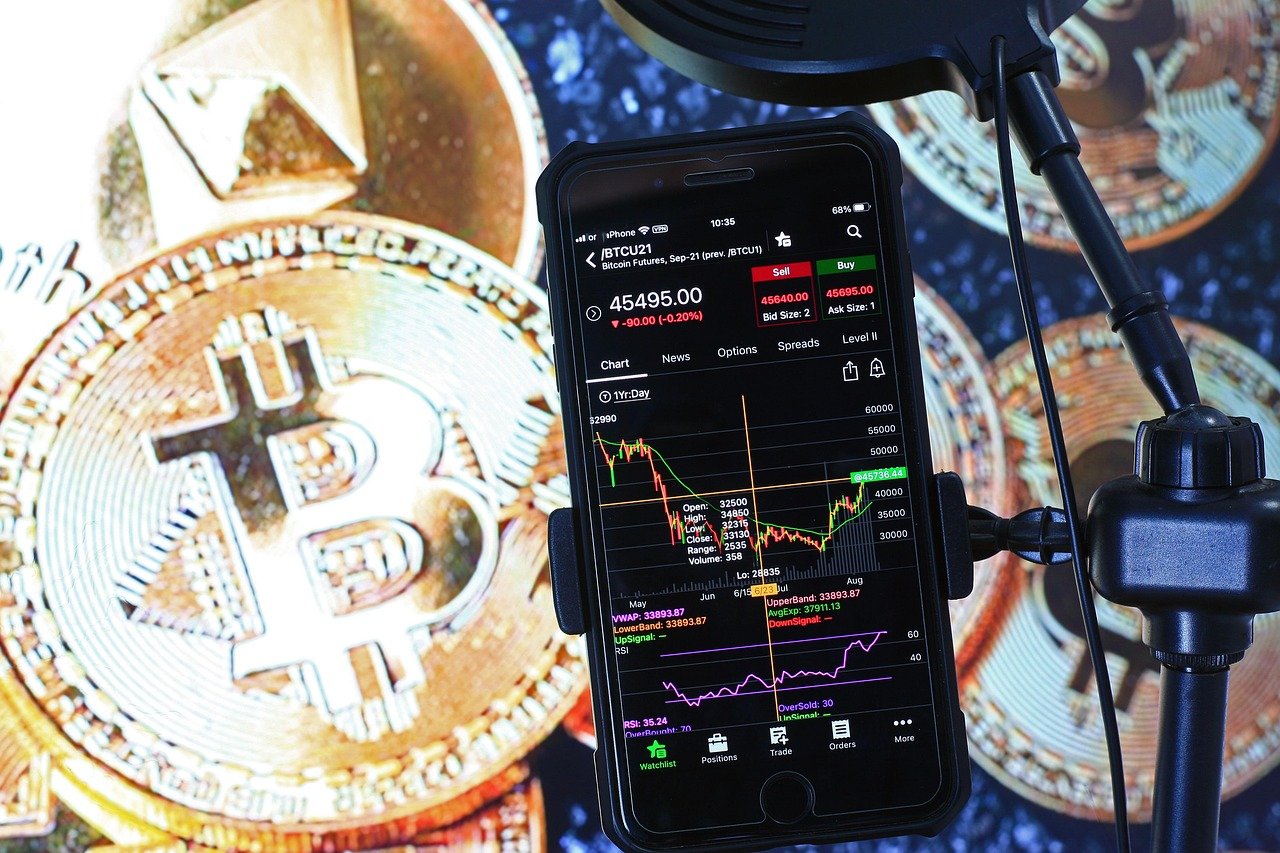Cryptocurrency. A buzzword that conjures images of overnight millionaires and equally rapid losses. At the heart of this financial rollercoaster lies one key characteristic: volatility. Understanding crypto volatility is crucial for anyone considering investing in or even just learning about this digital asset class. This blog post will delve into the nature of crypto volatility, exploring its causes, impacts, and strategies for navigating its turbulent waters.
Understanding Crypto Volatility
What is Crypto Volatility?
Volatility, in the context of cryptocurrency, refers to the degree of price fluctuation over a given period. High volatility means prices can swing dramatically, both upwards and downwards, in short timeframes. This is unlike traditional assets like stocks or bonds, which tend to exhibit more gradual price movements. Crypto volatility is typically measured using metrics like standard deviation, which quantifies the dispersion of returns around the average return. The higher the standard deviation, the greater the volatility.
Example: Bitcoin, the most well-known cryptocurrency, has been known to experience daily price swings of 5-10%, and even larger swings during periods of market uncertainty. This contrasts sharply with the stock market, where a 1-2% daily change in a major index like the S&P 500 is often considered a significant event.
Factors Contributing to Crypto Volatility
Several factors contribute to the notorious volatility of cryptocurrencies:
- Market Sentiment: News, social media buzz, and general public opinion can heavily influence crypto prices. A single tweet from a prominent figure or a negative regulatory announcement can trigger massive sell-offs or buying frenzies. This is because the cryptocurrency market is heavily driven by speculation and fear of missing out (FOMO).
- Limited Liquidity: Compared to traditional financial markets, the cryptocurrency market, particularly for smaller altcoins, has lower liquidity. This means that relatively small buy or sell orders can significantly impact the price.
- Regulatory Uncertainty: The regulatory landscape for cryptocurrencies is still evolving. Unclear or conflicting regulations across different jurisdictions create uncertainty, leading to price volatility.
- Technological Developments and Security Concerns: New technological advancements in blockchain technology can boost confidence and drive up prices. Conversely, security breaches, hacks, or network congestion can lead to panic selling and price drops.
- Market Manipulation: Due to the relative immaturity and lack of robust regulation, the crypto market is susceptible to manipulation tactics such as “pump and dump” schemes, which can artificially inflate prices before crashing them down, leaving unsuspecting investors with losses.
- Macroeconomic Factors: Broader economic trends, such as inflation rates, interest rate hikes, and geopolitical events, can also impact cryptocurrency prices, just like they affect traditional assets. Investors may shift their investments based on these global economic shifts.
The Impact of Volatility on Crypto Investments
Potential Risks and Rewards
Volatility presents both risks and rewards for crypto investors.
- High-Risk: The rapid price fluctuations can lead to significant losses if investments are poorly timed or managed. Investors need to be prepared for the possibility of losing a substantial portion of their investment.
- High-Reward: Conversely, if navigated correctly, volatility can offer opportunities for significant gains. Buying low during market dips and selling high during price surges can generate substantial profits.
- Emotional Toll: The constant price swings can be emotionally taxing, leading to anxiety and impulsive decision-making. It’s crucial to maintain a disciplined approach and avoid emotional investing.
Short-Term vs. Long-Term Perspectives
The impact of volatility differs depending on the investment timeframe.
- Short-Term: Day traders and swing traders thrive on volatility, seeking to profit from short-term price movements. However, this approach is highly risky and requires significant expertise and constant monitoring.
- Long-Term: Long-term investors may view volatility as an opportunity to accumulate more crypto at lower prices through dollar-cost averaging (DCA). The focus is on the long-term potential of the underlying technology and its adoption.
Example: An investor using DCA might invest $100 in Bitcoin every month, regardless of the current price. When the price is low, they acquire more Bitcoin, and when the price is high, they acquire less. This strategy helps mitigate the impact of short-term volatility.
Strategies for Managing Crypto Volatility
Diversification
Diversifying your crypto portfolio can help mitigate risk by spreading your investments across different assets.
- Allocate across various cryptocurrencies: Don’t put all your eggs in one basket. Invest in a mix of established cryptocurrencies like Bitcoin and Ethereum, as well as smaller altcoins with promising potential.
- Consider different sectors: Invest in cryptocurrencies representing different sectors, such as decentralized finance (DeFi), gaming, or supply chain management.
Dollar-Cost Averaging (DCA)
As mentioned earlier, DCA involves investing a fixed amount of money at regular intervals, regardless of the price. This strategy helps reduce the impact of short-term volatility and can lead to better average returns over time.
Stop-Loss Orders
A stop-loss order is an instruction to automatically sell your crypto if the price falls below a certain level. This helps limit potential losses during market downturns.
Example: You buy Bitcoin at $30,000 and set a stop-loss order at $27,000. If the price drops to $27,000, your Bitcoin will automatically be sold, limiting your potential loss to $3,000 per Bitcoin.
Research and Due Diligence
Thorough research is essential before investing in any cryptocurrency. Understand the underlying technology, the team behind the project, the market cap, and the potential use cases.
Emotional Discipline
Avoid making impulsive decisions based on fear or greed. Stick to your investment plan and avoid getting caught up in market hype.
Future Trends and Volatility Reduction
Increased Institutional Adoption
As institutional investors increasingly enter the crypto market, the market is likely to become more mature and stable, potentially reducing volatility.
Regulatory Clarity
Greater regulatory clarity across different jurisdictions can reduce uncertainty and improve market stability.
Improved Market Infrastructure
The development of more sophisticated trading platforms and financial instruments can improve market efficiency and reduce the potential for manipulation.
Technological Advancements
Ongoing technological advancements, such as improvements in blockchain scalability and security, can enhance the credibility and stability of cryptocurrencies.
Conclusion
Navigating the volatility of the cryptocurrency market requires a combination of knowledge, strategy, and emotional discipline. While volatility presents both risks and opportunities, understanding its causes and implementing appropriate risk management techniques can help investors make informed decisions and potentially achieve their financial goals. By diversifying your portfolio, using dollar-cost averaging, setting stop-loss orders, conducting thorough research, and maintaining emotional discipline, you can better navigate the turbulent waters of the crypto market and position yourself for long-term success. The key is to stay informed, adapt to changing market conditions, and never invest more than you can afford to lose.



